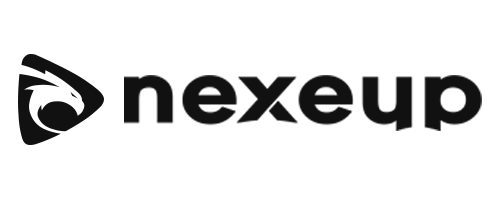Summary
- The text emphasizes aligning career goals with core values to maintain motivation during challenges.
- It advocates using the SMART framework to transform vague goals into concrete, trackable objectives.
Before you jot down any career goal, get clear on why it truly matters to you. Simply wanting “a good career” or “more money” rarely sticks when the going gets tough—your superficial motives may fade under pressure. Instead, ask yourself what deeper need or value drives that desire. Maybe you want financial stability to help your family, or the confidence a new role would bring you. When goals tap into your core values—your family, autonomy, or long‑term vision—you’ll find the grit to keep going even when setbacks hit.
Connecting Values to Goals
- Heart Over Head: Move beyond logical reasons (“it’ll pay well”) by finding emotional anchors (“I want to be able to retire my parents”).
- Visualization Techniques: Write your goals where you’ll see them daily—on your mirror, phone lock‑screen, or desk. That daily reminder primes your mind for success.
Step 1: Make It SMART
The SMART framework transforms vague wishes into concrete targets you can track and achieve.
- Specific: Define exactly what you want (e.g., “Earn a project management certification” instead of “advance my career”).
- Measurable: Establish clear metrics (e.g., “Complete the online course and pass the exam by September 30”).
- Achievable: Ensure it’s within your reach given your skills and resources.
- Realistic: Align with your life circumstances—time, budget, and support network.
- Time‑Bound: Set a deadline to create urgency and structure.
Using SMART increases success rates by giving you a roadmap rather than a fleeting resolution.
Step 2: Identify Potential Obstacles
No goal‑setting journey is obstacle‑free. Anticipating challenges ahead of time helps you craft contingency plans rather than be blindsided.
Common Roadblocks
- Skill Gaps: You may need training or mentorship to bridge knowledge gaps.
- Time Constraints: Work and personal life can squeeze your available hours.
- Financial Limits: Certifications and courses often carry costs.
Planning Around Obstacles
- Resource Audit: List what you’ll need—courses, budget, time blocks—and plan how to secure them.
- Milestone Buffer: Build small deadlines with slack time for unexpected delays.
- Accountability Partner: Share your plan with a mentor or colleague to keep you on track.
Step 3: Build Your Action Plan
With SMART goals and obstacle plans in hand, it’s time to map out your daily, weekly, and monthly tasks.
- Brainstorm Tasks: Break your main goal into specific actions. For a certification: research programs, enroll, schedule study sessions, register for exams.
- Set Milestones: Four‑month check‑ins, two‑month progress reviews—milestones keep momentum and let you adjust if you’re falling behind.
- Schedule It: Block time on your calendar as non‑negotiable appointments with yourself.
An action plan turns aspiration into habit. Without it, even SMART goals can remain abstract ideals.
Step 4: Monitor Progress and Adapt
Regularly review how you’re tracking against your milestones.
- Weekly Reviews: At the end of each week, compare completed tasks against your action plan. Are you on schedule?
- Adjust and Iterate: If you’re lagging, recalibrate your next week’s plan—maybe shift study hours or find additional resources.
- Celebrate Small Wins: Recognizing micro‑successes, like passing a mock exam, fuels motivation.
Continuously monitoring ensures you don’t drift off course. It also helps you spot and fix problems early.
Step 5: Stay Accountable and Resilient
Goals often attract skepticism—from others and from your own self‑doubt.
Tuning Out Naysayers
People who haven’t walked your path may project their insecurities onto you. Their “you can’t do that” is often a reflection of what they wouldn’t do themselves.
- Selective Sharing: Tell only supportive peers or mentors about your goals.
- Positive Reinforcement: Surround yourself with resources—books, podcasts, communities—that affirm your path.
Building Resilience
- Reflect on Your Why: When motivation dips, revisit the core reasons you set this goal.
- Self‑Compassion: Accept setbacks as learning opportunities, not failures.
By blending accountability (via mentors or peers) with emotional resilience, you give yourself the best shot at long‑term success.
Putting It All Together
- Find Your Why: Anchor your goal in personal values.
- Use SMART: Craft specific, measurable, achievable, realistic, time‑bound objectives.
- Anticipate Obstacles: Identify and plan for potential roadblocks.
- Action Plan: Break goals into time‑framed tasks and milestones.
- Stay Accountable: Monitor progress, celebrate wins, and tune out negativity.
Setting career goals isn’t a robotic checklist; it’s a deeply personal, dynamic process. Ground each step in what matters to you, adapt as you go, and remember: persistence powered by genuine motivation is what separates fleeting resolutions from lasting achievements








This is a fantastic guide to setting meaningful career goals. By connecting goals to personal values and using the SMART framework, it becomes easier to stay motivated and focused. The emphasis on resilience and adaptability is particularly encouraging, reminding us that setbacks are part of the journey and not the end. Keep pushing forward!